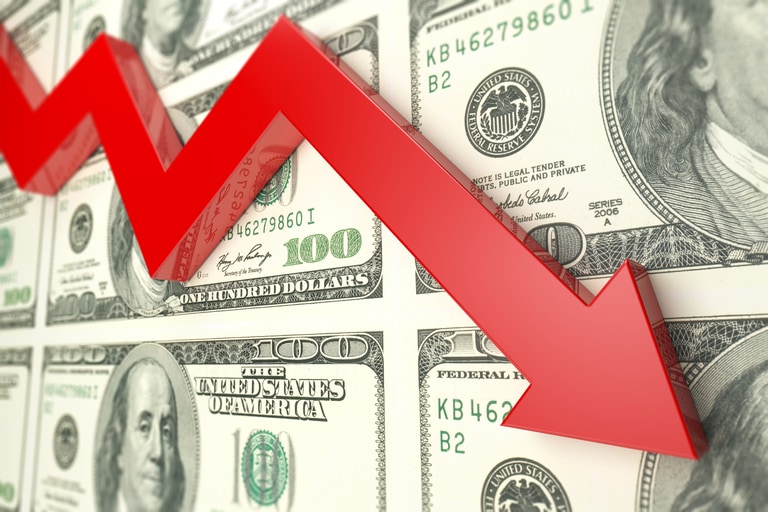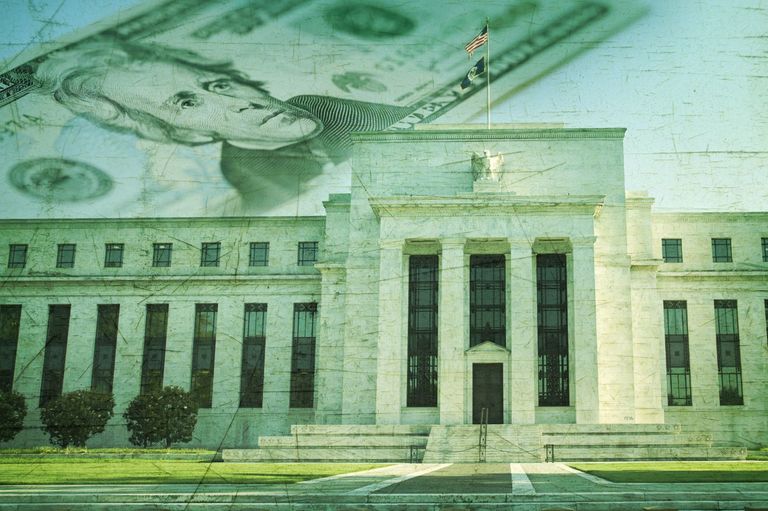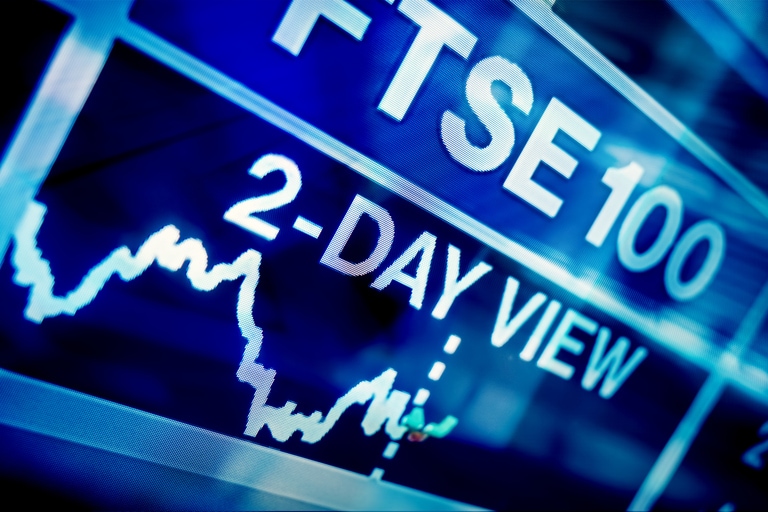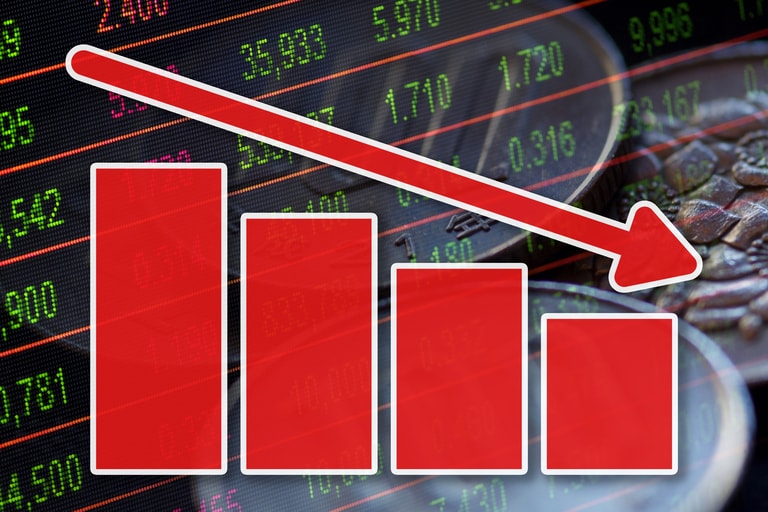European markets have had a largely negative bias throughout the day as investors, having absorbed the weekend deal between House Republicans and the White House, now look to whether the deal has the votes to pass through the respective legislative houses. It could well be that arriving at a deal was the easy part, with partisan interests on both sides threatening or delaying a positive vote into legislation, ahead of the new 5 June deadline.
Europe
The FTSE 100 has had a negative start to the week, slipping lower on the back of weakness in the consumer staples and energy sector, as recession risks rise.
The latest consumer survey from the British Retail Consortium showed that inflationary pressures remained elevated in May, particularly in food, where at the weekend it was being reported that the government was talking to supermarkets about price controls on some basic food price items.
While one can sympathise with the government’s desire to ease the cost of living, they might want to look a little closer to home as to the reasons why prices in general are as high as they are, starting with domestic energy policy, which has been a cornucopia of policy failures over the last 20 years. In any case, price controls have never worked as the UK’s experience of the 1970s will testify, and only serve to drive scarcity, which keeps prices higher for longer, as anyone with a basic economics education will tell you.
On the fallers Ocado is lower as it gets set drop through the trapdoor into the FTSE 250, while we’re also seeing weakness in food retailers and suppliers with Unilever and Reckitt Benckiser also underperforming, with Unilever announcing the retirement of its CFO Graeme Pitkethly.
Rolls-Royce shares are under pressure on the back of reports that the Indian government took out a criminal complaint against the business over the sale of Hawk jets to the country back in 2003 and 2012. BAE Systems has also been named in the complaint.
US
US markets initially opened mixed with the Nasdaq 100 leading the way higher, driven by Nvidia which has continued to go from strength to strength, driven by a frenzy of optimism over the development of Artificial Intelligence (AI).
Apart from that, price action has been scrappy with little in the way of direction as markets look to whether the debt ceiling deal agreed at the weekend will make it across the line.
Nvidia shares became the first ever chip maker to achieve a $1trn valuation when US markets opened as the rally from last week’s blowout earnings number continued to push the share price into the stratosphere. The momentum appears to be being generated by optimism over the chipmaker's position at the vanguard of AI chip development. Over the weekend Nvidia CEO Jenson Huang announced a raft of new AI related products which could help shape how companies’ network and advertise.
Tesla shares are higher as CEO Elon Musk sets down in China as he embarks on a tour of the Tesla factories in the country, with high-ranking Chinese government officials.
Netflix shares have also continued to build on recent gains pushing up to 15-month highs, as they rolled out their new password sharing rules into the UK in the last few days.
HP shares are also in focus after the bell as it gets set to post its Q2 numbers, at a time when revenues have been slowing over the last few quarters. In Q1 revenues slowed to $13.8bn, while for Q2 revenues are expected to come in at $13.04bn, a sharp drop from last year’s $16.49bn. For Q2 profits are expected to remain steady at $0.76c a share, with computers and notebooks still forecast to be a drag.
FX
The pound is outperforming after the latest shop price survey from the British Retail Consortium showed that price pressures in the UK economy were showing little signs of slowing, thus prompting speculation of further rate rises from the Bank of England. This speculation of further tightening from the UK central bank could well put a floor under the pound in the short term. While the market is currently pricing in another 100bps of hikes in the coming months, it would be a big surprise if the Bank delivered on that expectation. If, as suspected, the Federal Reserve only hikes by another 25bps later this month, it would be a surprise if the Bank delivered more than that. Once the Fed signals it is probably done, or the market feels the Fed is done, the pressure to hike further usually comes off other currencies.
The Japanese yen has clawed back some ground after the US dollar pushed above the 140.00 level earlier this week and Japanese officials said they would consider responding to currency moves in light of recent yen weakness. The decline in oil prices is weighing on the likes of the Norwegian Krone and Canadian dollar.
Last week crude oil prices were able to register their second successive weekly gain in a row, after warnings from the Saudi Oil minister that traders should watch out if they were expecting further weakness in prices.
Today we’ve seen oil prices slide back again as investors look towards the next stage of the US debt ceiling saga and concerns that sticky inflation will likely act as a brake on demand and ergo the wider global economy. Output levels which were expected to get tightened during the months of April and May, haven’t been as tight as expected meaning that supplies are higher than expected.
Volatility
With US and UK markets closed on Monday, the opportunity for elevated levels of price action appears to have been somewhat limited. One stock which saw some heightened activity however was the miner BHP, following material gains in early trade. A convergence of factors appeared to be driving sentiment here, with optimism over a US debt ceiling resolution – something that has indeed now been seen - and rising Iron Ore prices both lending some support. One day volatility came in at a relatively constrained 25.41%, but up from the one month print of 24.08%.
The Hang Seng is continuing its run lower despite that debt ceiling news. However, it’s the prospect of a more hawkish Fed that appears to be the most significant drag here and the index is critically closing in on a 20% decline from the highs printed earlier in the year. With the Hang Seng threatening a fall into bear market territory, one day vol stood at 32.94% against 24.57% for the month.
Across other asset classes, activity has been looking very subdued. Copper was comparatively the most active commodity, having recovered the losses of the last week to briefly retest the $3.70 per pound level. One day vol sat at 19.56% against 22.63% on the month. And in currencies, the Kiwi Dollar against the greenback topped the table as the pair continued its run lower, although again with one day vol of 10.28%, this was below the one month reading of 10.58%.
Disclaimer: CMC Markets is an execution-only service provider. The material (whether or not it states any opinions) is for general information purposes only, and does not take into account your personal circumstances or objectives. Nothing in this material is (or should be considered to be) financial, investment or other advice on which reliance should be placed. No opinion given in the material constitutes a recommendation by CMC Markets or the author that any particular investment, security, transaction or investment strategy is suitable for any specific person. The material has not been prepared in accordance with legal requirements designed to promote the independence of investment research. Although we are not specifically prevented from dealing before providing this material, we do not seek to take advantage of the material prior to its dissemination.







